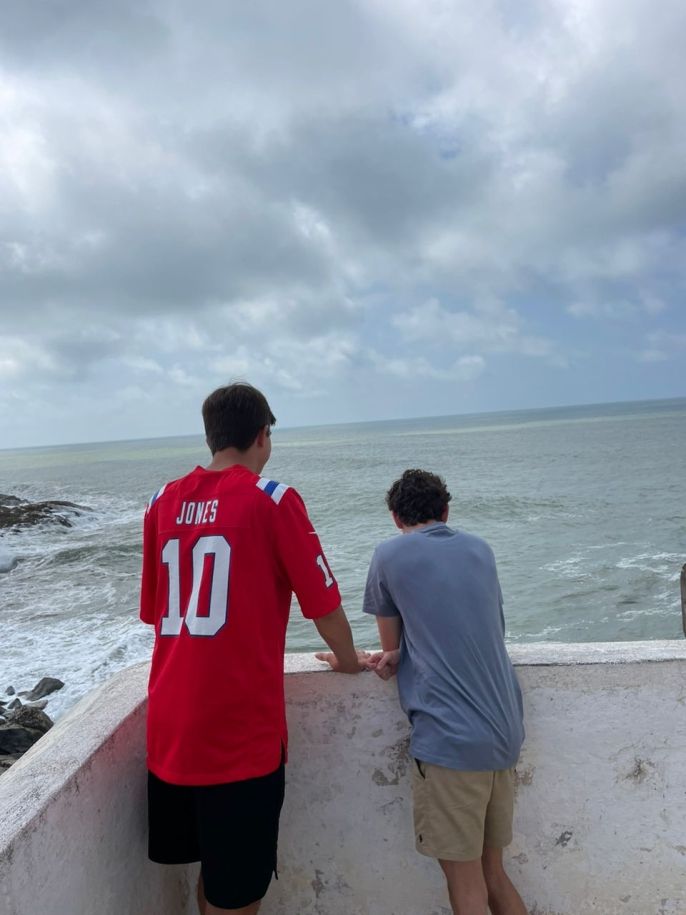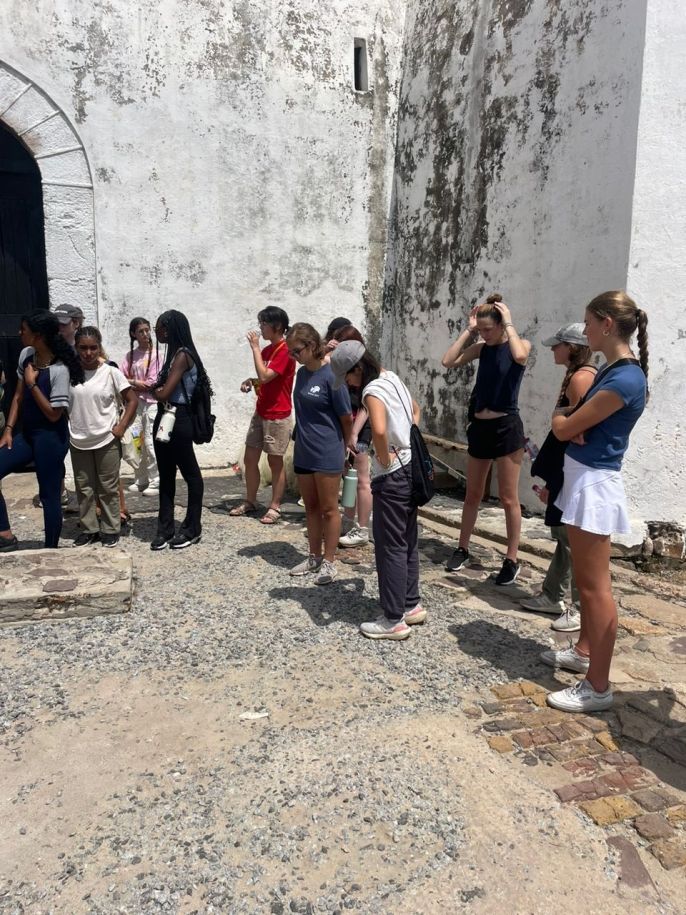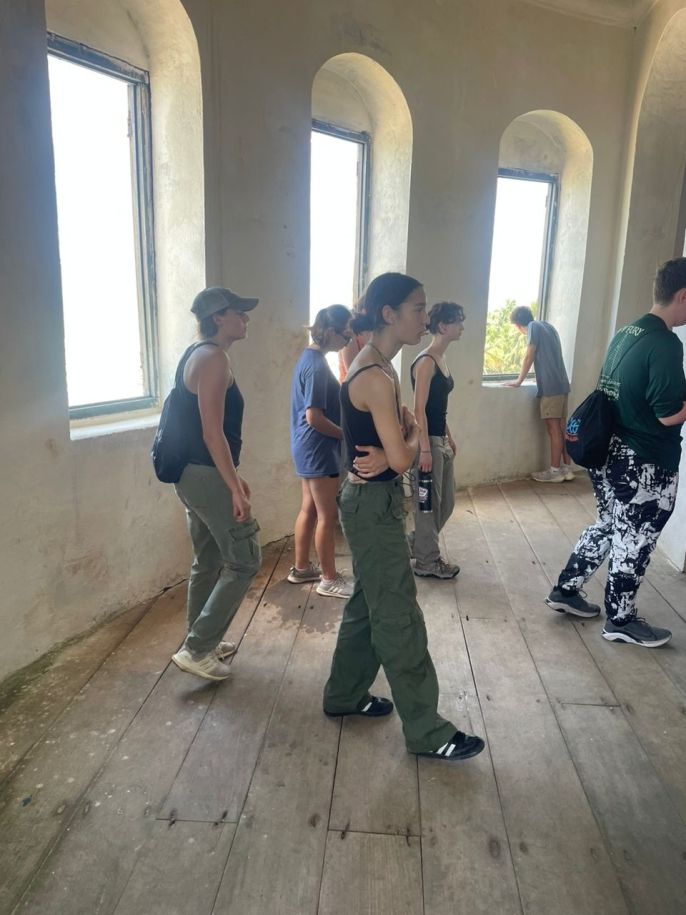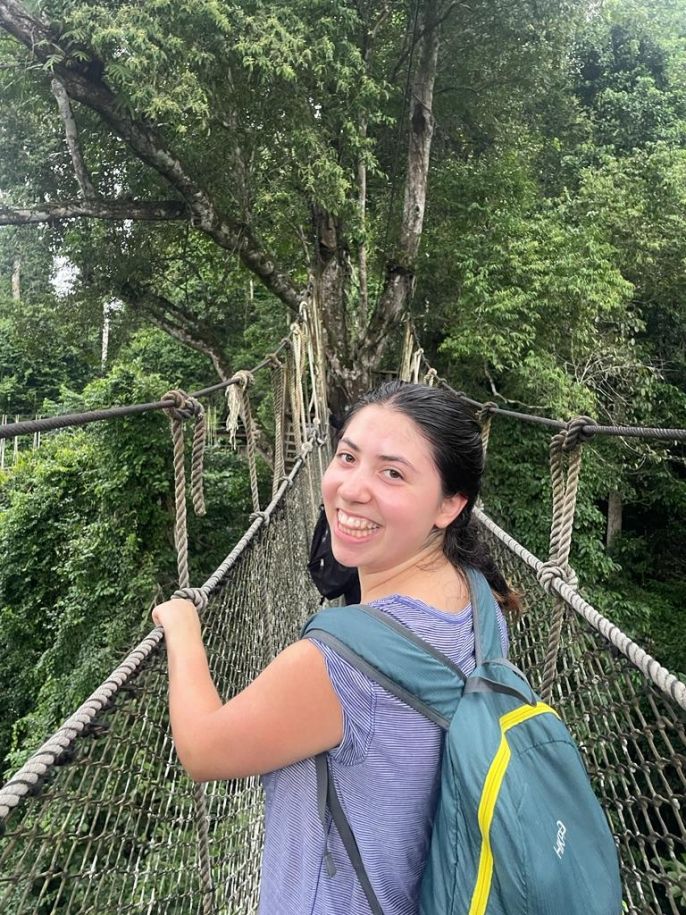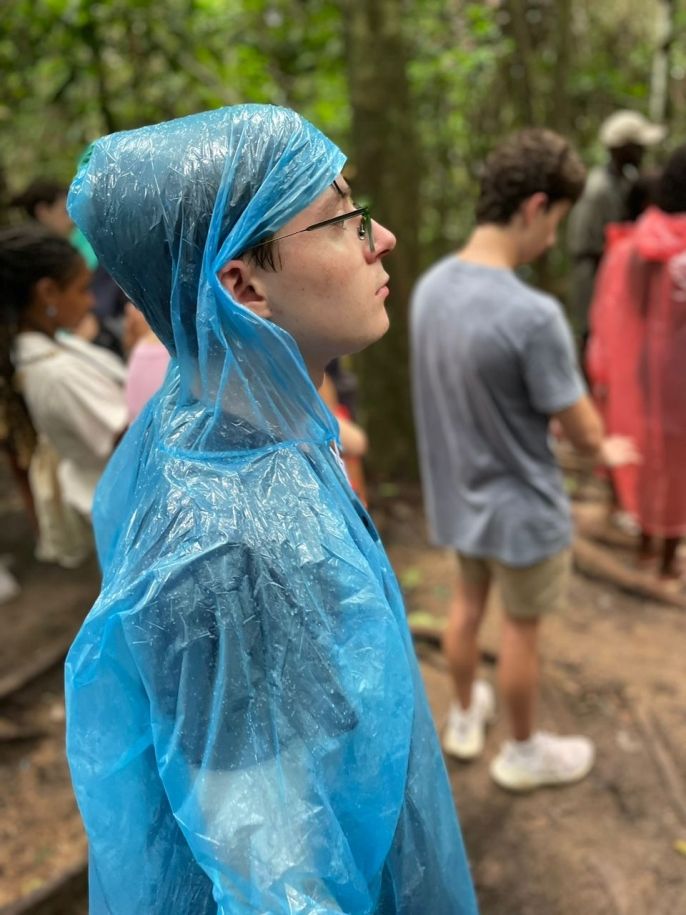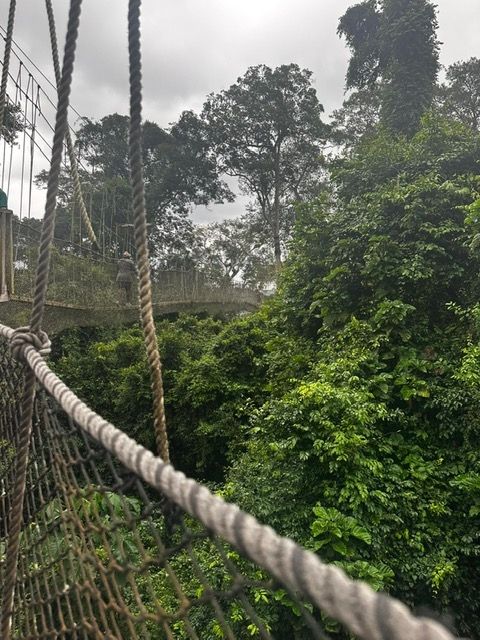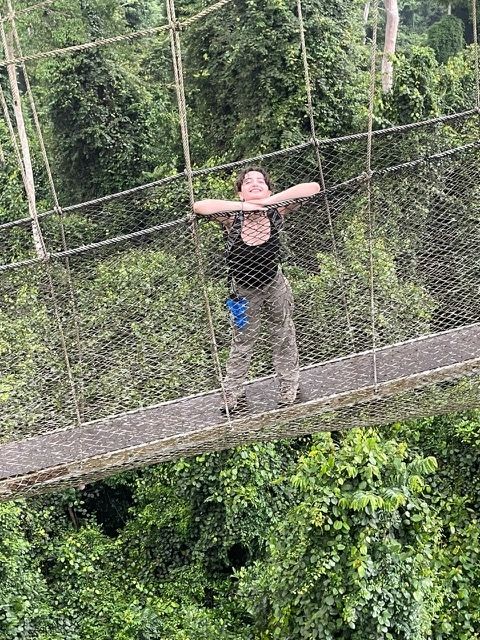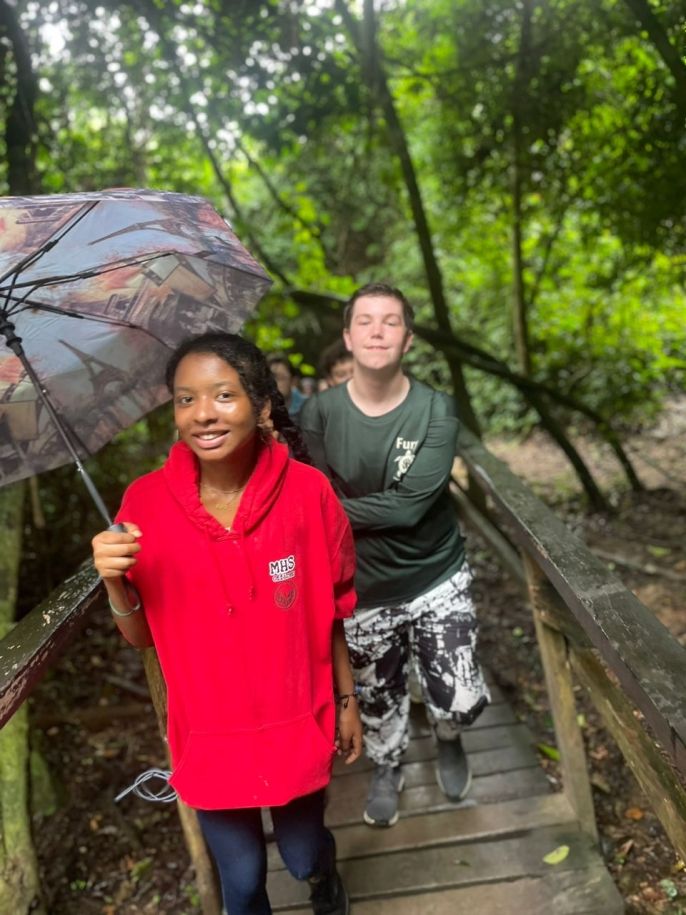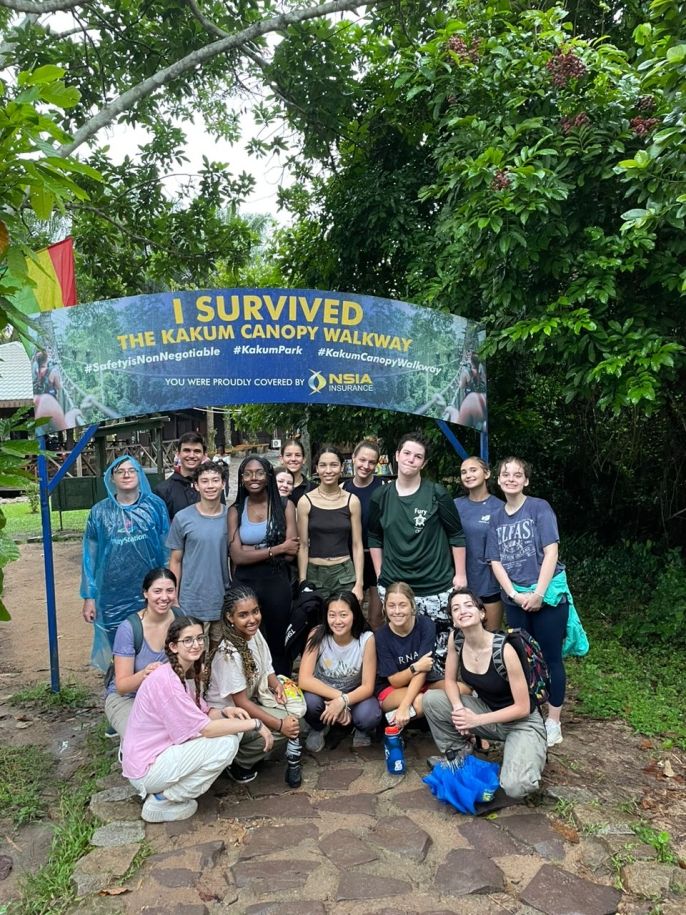World History 101
The Global Navigator’s first week concluded with a trip to Cape Coast and the Kakum National Park. The group learned of the horrors of the Transatlantic Slave Trade through a local tour guide and a walk through the four-century dwelling. Cape Coast Castle was a trading post on the West African coast. Originally built by Sweden in the 1650s, Cape Coast Castle shifted into Danish, Dutch, and then English possession by the 1660s. In its early decades, trade revolved around gold, wood, and textiles before English merchants began to seek Africans in large numbers. Over the course of the eighteenth century, most of Cape Coast Castle’s trade was in African slaves bound for the Americas. After Britain legally abolished the slave trade in 1807, the castle became an educational and administrative center.
To unpack the heaviest moments of the morning, the participants trekked to the Kakum National Park, one of three places in Africa that features a canopy walk through the trees. It covers a distance of 1,150 feet (350 m) while connecting through seven different trees. Although there is an option to forgo the climb, our brave Navigators easily conquered all seven canopy walks during a nonstop downpour. After the walk, some participants sat to reflect while drinking fresh coconut and enjoying the falling rain. As the group took the three hour bus ride back to the student hostel, they chattered enthusiastically about the lessons learned during the first week and with optimism for the upcoming weeks.
Asia
Twi Word(s) of the Day— Medaase
Medaase means thank you
Related Posts

Student Project: Shared Respect
During this program, the participants worked in groups to create projects reflecting their experiential learning from the last three weeks. The following is a selection from Sabrina Addo and Maya... keep reading
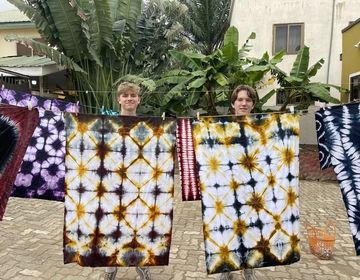
Tying Up Loose Ends
With only a few days left in our program, we are embracing every opportunity to make lasting memories and reflect on our incredible journey. One of the highlights of this... keep reading
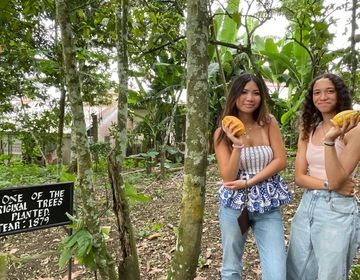
Visiting Ghana’s First Cocoa Farm
Student Blog Takeover: Milo and Anthea visit Ghana's first cocoa farm
